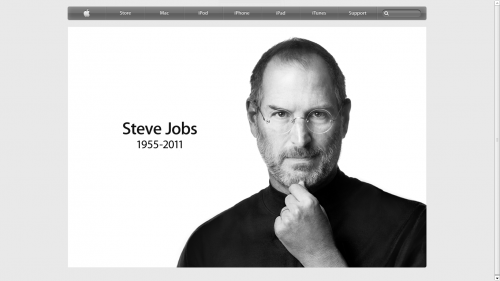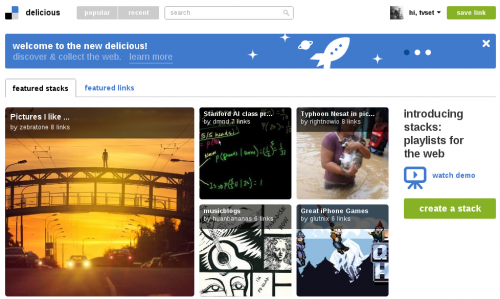Flickr blog post yesterday celebrated 200,000,000 images published under Creative Commons license. According to the same blog post, this makes Flickr the largest Creative Commons image repository in the world. This is indeed a huge and important milestone and I congratulate Flickr and everyone involved in achieving it. I’ve always said that there are many photo sharing websites that serve different audiences, tastes, and preferences. But Flickr goes beyond that by providing an excellent Creative Commons platform. I hope that this will grow and flourish.
Category: Technology
I work in technology sector. And I do round a clock, not only from 9 to 5. It is my bread and butter, it is my hobby, it is the fascination of my life. And with the current rate of change particular in information technology (IT), there is always something new to learn, to try, to talk about. I often post news, thoughts, and reviews. And when I do, this is the category I use.
RIP Steve Jobs
It doesn’t matter if you know, like or use any of the Apple products. If you are reading this, your life has been influenced by Steve Jobs. The computer mouse that you are holding in your hand now, the computer, table, or a mobile device which you use to read this, the browser window, the fonts, the buttons, and other elements of the user interface – these are just a few things that are different today because of Steve’s work. His contribution was huge.
I’m not going to idolize him – each and every human being has his ups and downs. We all make mistakes and we all screw up. But the important thing, I guess, is whether each and every one of us makes this world any better. Steve Jobs has improved this world a lot. And he inspired many others to do the same. For that, I am grateful to him. For that I respect him a lot.
Thank you, Steve. Rest in peace.
Project management tips from Linus Torvalds
Linus Torvalds shares some of his thoughts on software project management in this interview. I have two favorite bits in there. One is on the obsession of the code quality control:
“The other thing—and it’s kind of related—that people seem to get wrong is to think that the code they write is what matters,” says Torvalds. Most software development managers have seen this one. “No, even if you wrote 100% of the code, and even if you are the best programmer in the world and will never need any help with the project at all, the thing that really matters is the users of the code. The code itself is unimportant; the project is only as useful as people actually find it.”
Just a few years ago I would have completely missed this point. Or argued passionately with it. But not anymore. After spending the last few years working with very dynamic software projects, I realized that no matter how much effort you spend on the code quality control, it will still degrade with time. And even if it becomes horrible and hard to look at, it will still work and you’ll still be able to maintain it. But the time and effort that was lost would have been so much more useful in supporting user requests and improving their experiences.
Even knowing this now, I am still a slave of my habits. I still need to control myself, set tight deadlines, and learn to ignore a lot of things that would have caused me a heart attack back in a day.
The second point that I found interesting in the interview is similar.
I also asked Torvalds about Software Configuration Management (SCM) tools like his own Git version control system. He replied, “I don’t think tools are all that fundamentally important.”
“Now, what is important is that there’s a good workflow for the project, and tools can certainly help with that,” said Torvalds. “But most projects don’t necessarily really need tools. There’s a lot of projects that simply don’t have enough changes to really require any tools at all for their work flow; if you only have a few hundred patches per release, you can maintain those just about any way you want, including entirely by hand.”
Again, a few years ago (and even sometimes now) I would argue and fight for the perfect setup and ideal toolbox. These days I seem to care less. As long as the work is being done and the project is moving on, I don’t really care which tools are being used. I have my preferences, of course, and I would try to push them through to be used by majority of participants, but I am much more relaxed on this subject than I used to be.
One other thing that I wanted to mention is the difference in perception. In Linus’ world, it seems, changes are always distributed as patches. To the effect that it would even be considered a specialized tool – everyone is using it. And I understand – all of the people with who he works are very experienced technical people and there is indeed no other way. But for the rest of us things aren’t as rosy. On several occasions I worked in a team where people weren’t using any tools. Literally. They had no idea about patches, diff, scripts, merging, version control, any of that. Changes in those projects were maintained by hand. And there would be nothing similar in concept to a release. Which didn’t help.
There was indeed one particular project. Do you know how I remember it? I was at one of those PHP conferences somewhere in Europe. And one of the talks I attended was on how to use unit testing during the re-factoring process. The presentation was filled with examples of ‘horrible’ code which was then surrounded by unit tests and later re-factored into better code. The code that was presented as ‘horrible’ was some of the best code I’ve seen in my life! After the presentation I came up to the speaker and showed him the project with which I was involved, which had some truly horrible code. You should have seen the look on his face… It took him a couple of minutes to compose himself and start thinking on how to work with that nightmare. He even thanked me and promised that we would include some examples of that crap in the future versions of his talk.
My point here is the difference in perception. When Linus says that things can be done without any tools at all, and when that guy talked about horrible code, they both, I think, are somewhat spoiled by their surroundings. I’m sure not everyone even would be able to make sense of a gadzillion tiny little things that Linus uses on a daily basis and doesn’t even consider them as full featured tools. I’m sure not everyone even would be able to read some of that ‘horrible’ code the other guy spoke about, let alone write something like that (I remember it being OOP, with comments, well-tabulated, etc). There is a certain minimum level which has to be there. That minimum level is assumed to be a zero. But it’s not always there.
Delicious is dead. Long live Delicious.
Plenty has been said in this blog about the social bookmarking service Delicious over the years. Lately, discussions of the Delicious fate were falling into the sadness. After the web service was bought by Yahoo, it was maintained and developed for a while and then began to slow down. Things got so bad in fact, that Yahoo announced that it was selling the property. That was a moment of panic for many – after all, good or bad, Delicious was a storage of vasts amount of wisdom for many people. Pretty much every user at the moment exported data and made a few backups. Most looked at the alternative services. Some started moving over. I was in that group as well, migrating all my bookmarks to Evernote.
Anyhow, Delicious was acquired by a couple of guys who are famous for their work on YouTube, back in the day. And that was a glimpse of hope. Finally, I thought, geeky techies will know what to do with it. They will know how to breath some life into the project and bring its much deserved popularity back. They will prove me moving all my stuff to Evernote wrong.
Finally, a few days ago, the new Delicious went live. Fresh look, new features – things that we all were waiting for. Or so it seemed. Upon a closer look it turned out that most of the old useful features are gone. And the new features aren’t the ones everyone was waiting for. Overall, this is a huge transformation of the service that Delicious is. Part of it is still Delicious – there are still bookmarks and tags. But part of it is something new – stacks, improved multimedia previews, missing networking, cropped tag navigation, and such. The primary focus of the service moved. Before it was primarily a storage of bookmarks. And secondly, a place to share bookmark wisdom via networking with friends, tagging, and search. Now, it’s more of a fancy multimedia collections or something of a sort.
Don’t get me wrong – I’m all for new and exciting technologies. But for me personally, Delicious was something completely different. And now, with this new release, the last hope of that old Delicious the memory of which I love and cherish, is gone. It’s no more. The end of an era. It’s time to move on and explore the new age. Delicious is dead. Long live Delicious.
SlideShare moves from Flash to HTML5
SlideShare is a social network where people share presentations and other documents. If you ever attended any conferences, talks or group meetings, chances are the slides for that were uploaded and made available on the SlideShare. Until now, though, using those slides was a bit awkward, since they were always converted to Flash. Your browser had to have a plugin, it was difficult or impossible to copy-paste text from slides, search was weird, and access from the mobile was very limited. Gladly, SlideShare announced that they are moving from Flash to HTML5 which by itself should fix all those nuances and provide for some more useful features.
Here are their reasons for switching:
- The exact same HTML5 documents work on the iPhone / iPad, Android phones/tablets, and modern desktop browsers. This is great from an operations perspective. This saves us from extra storage costs, and maximizes the cache hit ration on our CDN (since a desktop request fills the cache for a mobile request, and vice-versa). It’s also great from a software engineering perspective, because we can put all our energy into supporting one format and making it really great.
- Documents load 30% faster and are 40% smaller. ‘Nuff said on that front, faster is ALWAYS better.
- The documents are semantic and accessible. Google can parse it and index the documents, and so can any other bot, scraper, spider, or screen-reader. This means that you can write code that does interesting things with the text on the slideshare pages. You can even copy and paste text from a SlideShare document, something that was always a pain with Flash.
Read the full story to learn about some of the difficulties they experienced during this migration.


